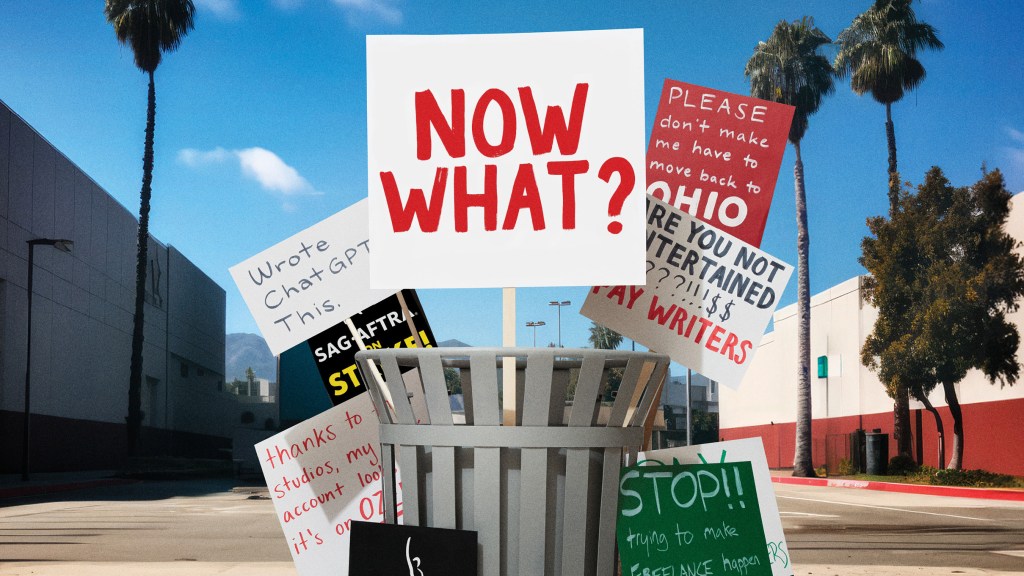Streaming Is a Lousy Business

Streaming is awesome. Consumers can watch what they want whenever they want. The fierce competition between services means more choices than ever. And the drive for scale means that streamers have been available at a bargain price, with the ability to cancel or resubscribe at will.
There’s just one problem: The streaming battles took very lucrative entertainment giants and made their rich profits vanish faster than CNN+.
The so-called “streaming wars” really trace their origin to a few fateful months in 2017 and 2018. Yes, Netflix had been serving original content for a decade before that, but in 2017 its streaming business kicked into high gear, with annual net income jumping from $186 million to $559 million (it would double again to $1.2 billion in 2018). Its stock price, which opened 2017 at about $130 per share, would soar to more than $360 in 2018 as Wall Street began valuing the company as a tech platform, giving it a multiple rivaling the likes of Google and Facebook.
Netflix’s success panicked Disney into announcing in 2017 that it would pull all its content from Netflix and launch what would become Disney+. In the aftermath of that debut in 2019, the floodgates opened, with NBCUniversal introducing Peacock and the arrival of Paramount+ and HBO Max (now Max).
The result has been tens of billions of dollars flowing into streaming content and away from linear TV … and massive losses for the legacy media companies that entered the space. Comcast, Disney, Warner Bros. Discovery and Paramount lost a combined $10 billion on their streaming services in 2022, according to a review of their annual reports. Only Netflix reported a profit: $6.5 billion. And some, like Paramount+ and Peacock, have yet to see their losses peak.
It’s a dire situation, particularly with Wall Street no longer valuing streaming companies as tech giants. And it’s a situation made worse by the WGA and SAG-AFTRA strikes, which closed the pipeline for TV shows and films.
It also raises an interesting question: Can streaming even work as a business model?
Speaking to investors and analysts Sept. 19 at Walt Disney World, Walt Disney CEO Bob Iger argued that indeed it could. When Iger laid out four key priorities for his company, making its streaming business profitable was at the top of the list.
“The company plans to make less content and spend less on what it does make, though getting key franchises like Star Wars back in theaters is a priority,” wrote JPMorgan analyst Phil Cusick in a Sept. 20 note, adding that he expects Disney+ to turn a profit by the end of fiscal 2024.
A top streaming executive tells THR that they believe profitability will come, led by advertising, and from getting “the value proposition right.” Many services launched at low prices to lure as many subscribers as possible as quickly as possible. That’s changing, and not only are the prices rising, but they are increasing in a way designed to drive subscribers to ad tiers, where these companies can further monetize users.
There’s a reason that Netflix and Disney+ adjusted their prices to make it more expensive to avoid ads, and there’s a reason Amazon is adding advertisements to Prime Video. They want consumers on those ad tiers (or to pay dearly for the privilege of opting out). Turns out, streaming is hard, but advertising remains a good business to be in.
There are a few encouraging signs that streaming can be profitable, if not quite as lucrative as the cable TV business model it replaces.
Netflix’s profits continue to grow, and for the first time a mainstream service from a legacy media company should turn a profit. Max, the service from WBD, was just about to break even in Q2, and it’s on track to turn a profit this year, CEO David Zaslav told investors during the company’s most recent earnings call.
WBD, of course, was particularly aggressive about slashing costs last year, including removing TV shows and films from the service to avoid paying for shows with little traction.
If the other legacy media companies are a year or so behind WBD, that tracks. Peacock and Paramount+ are aiming for breakeven by the end of next year, as is Disney+, though the impact of the strikes — as a help or a hindrance to this goal — remains to be seen.
And then there’s the Charter Spectrum wild card: If the cable giant is successful in bundling together all the entertainment streaming services, as it’s doing with Disney+, the legacy companies might just be able to find their way to profitability the old-fashioned way: by letting a cable company sell it all together.
Some of the most popular shows on streaming are from the late 1990s and early 2000s anyway (Friends, Grey’s Anatomy, The Office). Why not bring back the business model, too? — Alex Weprin
